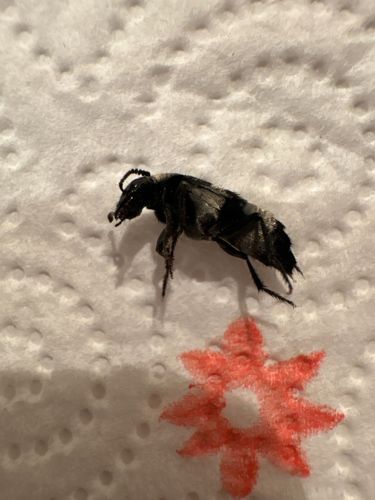Carrion Beetle (likely American Carrion Beetle)
Scientific Name: Nicrophorus americanus (or a related species in Nicrophorus)
Order & Family: Coleoptera, Silphidae
Size: 25-35 mm (1-1.4 inches) for N. americanus; other species in the genus can vary.

Natural Habitat
Typically found in forests, woodlands, and grasslands where small vertebrate carcasses are present. They are attracted to decaying flesh.
Diet & Feeding
Adults and larvae feed on decomposing animal carcasses (carrion). They also consume maggots and other insects found on carrion.
Behavior Patterns
Known for their elaborate parental care. A male and female pair will work together to bury a small vertebrate carcass (like a bird or mouse), strip it of fur/feathers, and form it into a ball. The female lays eggs on or near the carrion, and both parents feed and protect the larvae as they develop on the buried food source. They use their antennae to detect carrion from a distance.
Risks & Benefits
Benefits: They play a crucial role in ecosystems as decomposers, helping to break down dead organic matter and recycle nutrients. They also help control fly populations by consuming maggots. Risks: They pose no direct risk to humans. Although they are associated with dead animals, they are not typically vectors for diseases.
Identified on: 9/23/2025